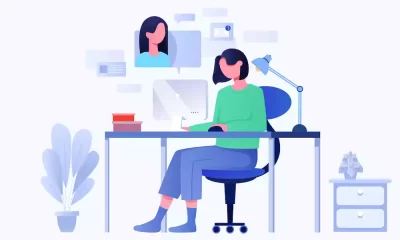Accounting & Finance
How to Reduce Credit Card Debt
Credit card debt can become the biggest financial liability that may spoil an individual’s life and peace. What was meant to serve as a convenience and as a substitute for cash, has now become an instrument for debt.
Credit card debt can become the biggest financial liability that may spoil an individual’s life and peace. What was meant to serve as a convenience and as a substitute for cash, has now become an instrument for debt. The wave of consumerism has converted the credit card into a means of buying more than what one can afford. Credit card companies make millions in interest payments charged on consumers’ outstanding bill amounts since they ask for just a minimum amount, while promoting their cards with frivolous consumer benefits.
Credit cards are like traps laid out by clever marketing strategies. They do serve the purpose of offering a means of acceptable payments in emergencies or a crisis. But over the years credit cards are used less for emergencies and more for splurging on all the new products invading the markets regularly. They provide the means of payment though the user may not be able to afford them.
This is what leads to the ever increasing credit card debt.
Credit card debt can reach dangerous levels that will eventually become a threat to the user’s financial security. In extreme cases, when these spending habits are not stopped, it can even cause bankruptcy. So before it reaches that level, the following measures can be taken to reduce credit card debt.
Essential steps to reduce credit card debt
- Make a list of all credit cards issued, and the outstanding balance in each.
- Remove them from the wallet so that there is no temptation to use them. Using all credit cards needs to be stopped immediately, till all the dues have been cleared.
- Check the balance in the savings account and if that is sufficient to cover the smallest amount due on a specific credit card, proceed to make the payment, so that at least one card is off the list of pending payments.
- Any additional incoming funds must not be used for a vacation, but instead, can be used to clear the balance on yet another card.
- Reduce spending, by making a conscious effort to buy only what is needed and no extras.
- Continue to pay the minimum amounts due on all credit cards so that there are no defaults recorded.
- Try credit card balance transfer-it is possible to transfer debt from high interest to lower interest credit cards. This will save some amount of interest to be paid.
- Use debt reduction services. In certain cases credit card companies agree to reduce the outstanding debt and accept a lower amount. This can be achieved by opting for a debt consolidation program.
- Use all resources to clear the higher interest credit cards first.
With shopping lists reduced and actual amounts spent coming down while income levels stay the same, the level of saving will increase. It is this saving on a monthly basis which will help to clear the debt incurred on each credit card. The process may take months if not years, but after all debts have been cleared, make sure not to start incurring credit card debts all over again.




